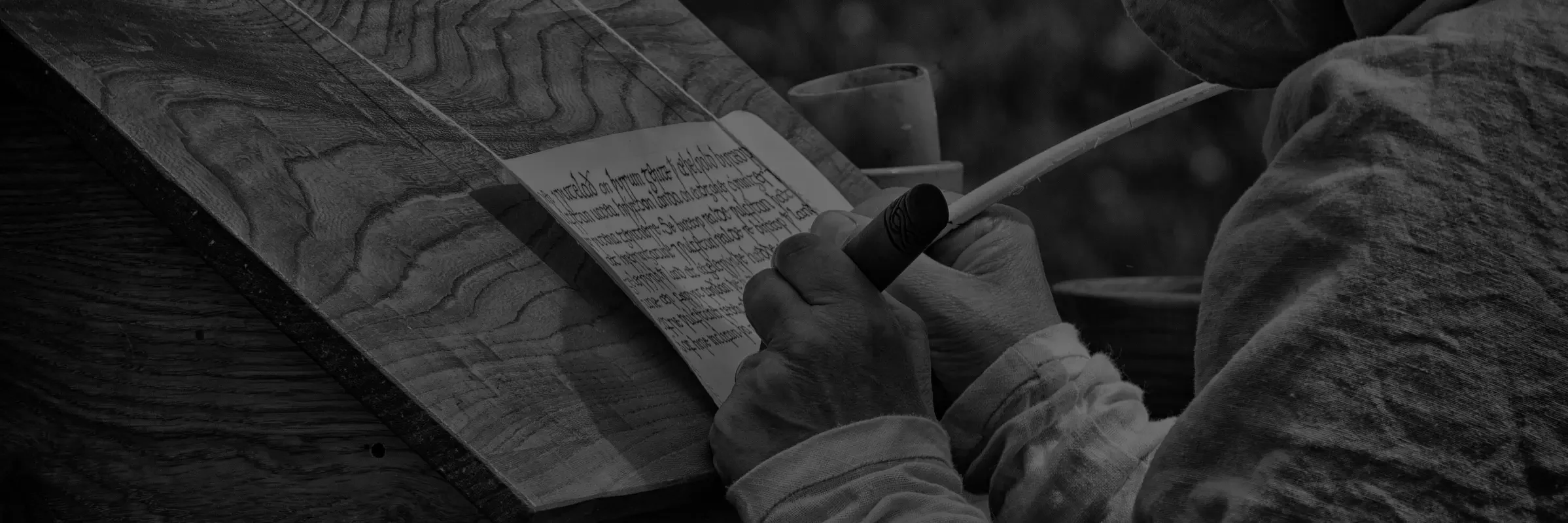Wirral's Hidden History Revealed
The Blood Eagle – Fact or Myth?
A question that I am often asked is ‘Did the Vikings really kill prisoners by inflicting upon them, a method of execution called the ‘Blood Eagle’?
It’s a hard question to answer because evidence is rare and unreliable but there are sources which do refer to it, so I will highlight some of known and recorded information in order that you can make your own mind up.
The Battle of Stamford Bridge
The first recorded Viking attack on England occurred in 793. Some 273 years later, after endemic warfare, dynastic changes, a merging of Anglo Saxon and Norse culture and the triumph of the Christian Church over paganism, the Viking age In England effectively came to a bloody and dramatic end at great battle of Stamford Bridge.
The Battle of Maldon
An act of heroic honour or gross stupidity?
The battle of Maldon, August the 10th or 11th, 991
Athelstan’s victory in 937 at Brunanburh, did not remove the Viking threat and after the king’s death, his successors, Edmund the 1st and Eadred had to deal with several Viking attempts to re-establish their rule in York and Northumberland. Anglo Saxon England did not become reunified until 954 when Eadred finally established full control.
The Battle of Holme
Aethelwold was the only surviving son of Alfred the Great’s brother, the former King Aethelred the first of Wessex.
When Aethelwold’s father died, he was considered too young to have been a suitable King, which led to the Witan of Wessex electing Alfred to the throne.
The Battle of Buttington
Anglo Saxons attack a Viking army outside of Welshpool
Today, Buttington, or Tal y Bont, is a small village on the outskirts of Welshpool in mid Wales on the border with Shropshire. The tranquil fields and beautiful surrounding countryside give no hint that a once deadly battle took place here, between the Anglo Saxons, led by three Ealdormen , namely Ethelred, Aethelhelm and Aethelnoth and a force of Vikings, part of a much larger army led by the legendary Viking warrior, Hastain.
Pre Brunanburh – Irelands Political Situation
We’ve referred to Anlaf’s great enemy in Ireland in previous assessments, namely Muirchertach Mac Neill. As we know, Anlaf had defeated the Vikings of Limerick just weeks before he left for England in order to challenge Aethelstan, but going back to 925 AD the Dublin Vikings had suffered a major defeat at the hands on Muirchertach at the battle of Carlingford. This battle was not only a significant defeat for the Dublin Norse but resonated throughout Ireland because Muirchertach slaughtered several hundred Vikings who had surrendered to him. Anlaf’s father Gofraid, had led the Dublin Norse into battle. He, somehow, had managed to escape.
Owain the First
Owain Ap Dyfnwal was a Northern British King who fought alongside Anlaf Guthfrithson and Constantine of Alba at the battle of Brunanburh in 937 AD.
He was king of Strathclyde, a kingdom of indigenous Britons, who’s Kingdom was formed during the post Roman period when the ethnic groups of the British Isles fought to create independent countries during a period of political instability and foreign invasion.
Ivar the Boneless
Ivarr hinn Beinlausi or Hyngwar (in old English), Ivar the boneless, was said to be the first born son of Ragnar Lodbrok and his third wife, Aslaug.
Holm-Going
There were two type of duels that were fought in the Viking period amongst Scandinavians. The practice was made unlawful sometime in the 11th century, but the two types were called einvigi and holmgang respectively.
Gods of the Vikings
The gods worshipped by the pagan peoples of Scandinavia consisted of a full pantheon of supernatural deities. I will refer to these gods as those of the Vikings, rather than referring to them as belonging to the Norse, Danes or Rus.
Egil Skallagrimsson
Egil Skallagrimsson was as Icelandic Viking who fought for the Anglo-Saxons at the battle of Brunanburh in 937 AD.
He appears to have had an adventurous life, but his life story, recorded by a relative, namely one Snorri Sturluson, over 200 years after the event’s of Egil’s lifetime, is embellished and as is typical with many of the Viking saga’s needs to be taken with the proverbial pinch of salt
Cwichelme’s Hlaew
After the battle of Maldon in 991, an English defeat, the Anglo Saxon chronicles recorded an arrogant English boast that if invading Vikings ever reached ‘ Cwichelme’s Hlaew’ , now Cuckhamsley Hill on the Berkshire downs, that they would never, ever make it home again.
Constantine Mac Aeda King of Alba
Constantine the second of Alba (early Scotland) was one of the Northern British Kings that fought against Athelstan at the battle of Brunanburh in 937 AD.
Burhs
The Burh (pronounced as Borx by the Anglo Saxons) system was designed and initiated to combat marauding Viking war bands and armies.
Berserkers
Amongst many of the sagas, including that of the Norse Kings, a class of warriors are exalted and feared above all others. These were the Berserkers (Bersirkir in old Norse). Sometimes they were also referred to as ‘wolfskins’ (Ulfhednar).

